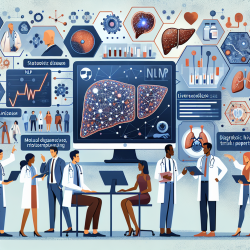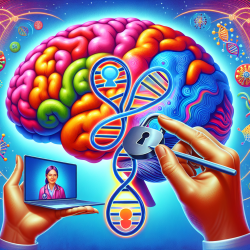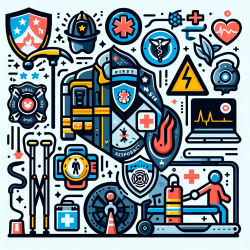The realm of medical diagnostics is witnessing a transformative shift with the integration of advanced technologies. Among these, Natural Language Processing (NLP) is emerging as a powerful tool to enhance the precision and efficiency of diagnosing complex conditions like metabolic dysfunction-associated steatotic liver disease (MASLD). This blog explores how practitioners can leverage the outcomes of recent research on NLP algorithms to improve their diagnostic skills and patient outcomes.
The Power of NLP in Medical Diagnostics
NLP, a branch of artificial intelligence, focuses on enabling computers to understand and interpret human language. In the context of medical diagnostics, NLP algorithms can process vast amounts of unstructured data—such as pathology reports—to identify patterns and make predictions. The study titled "A natural language processing algorithm accurately classifies steatotic liver disease pathology to estimate the risk of cirrhosis" highlights the potential of NLP in accurately scoring histological features from pathology free-text.
Key Findings and Implications for Practitioners
The research demonstrated that the NLP algorithm achieved high predictive values, ranging from 93.5% to 100%, for various histologic concepts related to MASLD. This accuracy enables practitioners to construct large, high-quality cohorts for studying MASLD progression and cirrhosis risk. The study found that the risk of cirrhosis increases with worsening fibrosis stage, providing valuable insights for clinicians in assessing patient prognosis.
- Enhanced Diagnostic Accuracy: By utilizing NLP algorithms, practitioners can achieve higher accuracy in diagnosing MASLD and predicting cirrhosis risk, leading to more informed clinical decisions.
- Time Efficiency: Automating the analysis of pathology reports reduces the time required for manual data extraction, allowing clinicians to focus more on patient care.
- Cohort Construction: The ability to construct large cohorts using NLP facilitates comprehensive studies on disease progression and treatment outcomes.
Encouraging Further Research
The successful application of NLP in this study opens avenues for further research in other areas of medical diagnostics. Practitioners are encouraged to explore how similar algorithms can be applied to different diseases and datasets. Collaborative efforts between clinicians and data scientists can lead to the development of more robust tools that enhance diagnostic capabilities across various medical fields.
A Call to Action
The integration of NLP into medical diagnostics is not just a technological advancement; it represents a paradigm shift in how we approach complex diseases like MASLD. By embracing these tools, practitioners can significantly enhance their diagnostic skills and contribute to improved patient outcomes. As we continue to explore the potential of NLP in healthcare, it is crucial for practitioners to stay informed and actively participate in this evolving landscape.










